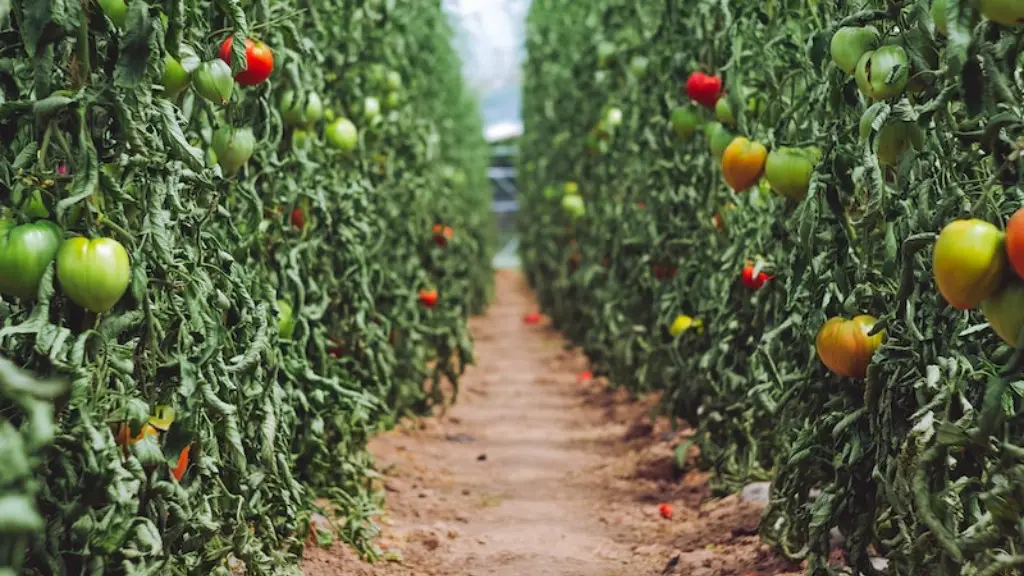Agriculture in India accounts for 15% of the nation’s Gross Domestic Product (GDP) and employs around 50% of the country’s workforce. This makes it one of the largest sectors in the economy, as it provides a livelihood for millions of people and is also the main source of income for many. In 2019, India’s agricultural output was estimated to be US$387.8 billion, a growth of 3.9% since 2017.
Agriculture in India is divided into three broad categories: cropping, livestock and forestry. Cropping is the most significant form, accounting for around 77% of agricultural output and including crops such as rice, wheat, maize, pulses, cotton and oilseeds. Livestock accounts for 17% of agricultural GDP, while forestry produces the remaining 6%.
India is the second largest producer of food in the world, producing over 255 million metric tons of food in 2019 – a 1.3% increase from 2017 and the highest in the world. Rice, wheat and maize are the three main crops and account for around 60% of India’s total food production. Other important crops are pulses, oilseeds, fruits and vegetables and tea.
India is also the world’s largest milk producer, producing 184.43 million metric tons of milk in 2019. Livestock also includes meat, wool, eggs and honey. Forestry is a smaller but nonetheless important industry, providing timber, fuelwood, fibre and animal feed.
In recent years, the government of India has been focusing on improving the agricultural sector through technological advances and better farmer education. This includes investments in irrigation, farm mechanization, soil health improvement and rural credit. The government also provides subsidies, loans and incentives to farmers, as well as crop and income insurance. These initiatives have led to an increase in productivity and an increase in the number of smallholder farms.
Technology advancements
Technological advancements have been a major factor in increasing agricultural productivity in India. Innovation in technology has played a key role in creating sustainable agricultural practices and increasing access to resources. Recent innovations include improved crop varieties, advanced irrigation systems, crop monitoring and data analytics. These efforts have helped infrastructure development, enabling better water management and improved farm productivity.
The government has also provided incentives to encourage the use of technology. This includes subsidies for farm mechanization (including tractors, combine harvesters and threshers), and the setting up of various agricultural technology parks. Private companies have also invested in the sector, providing farmers with new technologies such as drones and artificial intelligence (AI).
These initiatives have enabled India to achieve higher yields and better agricultural outcomes. In 2019, cereal yields in India increased by 2.9% compared to 2018. The government is continuing to increase its agricultural research investments, with the aim of increasing yields and improving food security.
Rural Credit
An important part of the government’s strategy for improving the agricultural sector is providing easy access to credit for farmers. In recent years, the government has implemented several initiatives to promote rural credit. This includes the Prime Minister Employment Generation Programme (PMEGP) and the Pradhan Mantri Gramin Awaaz Yojana (PMGAY). These programmes provide loans to smallholder farmers to enable them to purchase agricultural inputs and upgrade their farms.
In addition, the government has implemented a number of subsidies and incentive schemes to support the agricultural sector. This includes subsidies for fertilizers, seeds and other inputs, as well as incentives for farmers to adopt sustainable practices. These programmes have enabled farmers to increase their incomes, strengthen their farms and contribute to the development of rural India.
The government has also implemented financial literacy initiatives to educate farmers about credit access, loan eligibility and repayment. These efforts have helped to reduce farmer debt, improve access to credit and increase farm productivity.
Market Liberalization
In recent years, the government has taken steps to liberalize markets for agricultural produce in India. This includes allowing farmers to directly sell their produce to consumers or to third-party buyers. These initiatives have helped to reduce the number of intermediaries and middlemen, and have resulted in better prices for farmers. This has helped to increase their incomes and has also improved their access to markets.
The government has also implemented a number of initiatives to promote organic farming. This includes providing subsidies to farmers who use organic fertilizers and adopting sustainable techniques. These efforts have helped to reduce the use of chemical inputs and have resulted in better soil and water health. This has led to higher yields and improved food security.
The government has also implemented price support schemes to protect farmers from price volatility. This includes the Minimum Support Price (MSP) scheme, which guarantees a minimum price for certain crops. The MSP scheme has helped farmers to get better prices for their produce and has also helped to stabilize prices in the market.
conclusion
Agriculture is an important part of the Indian economy, contributing around 15% of the nation’s GDP and employing around 50% of the workforce. The government has implemented a number of initiatives to improve the agricultural sector, including technological advancements, rural credit, market liberalization and price support schemes. These efforts have enabled India to achieve higher yields, improve food security and increase smallholder incomes.



